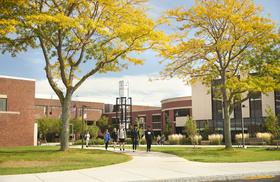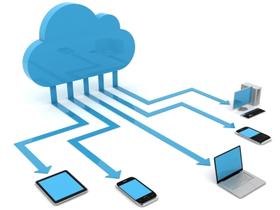According to the National Center for Education Statistics (NCES), nearly 20 million students were expected to attend colleges and universities in the fall of 2019. Another 3.7 million students are expected to graduate from public or private high schools in the spring of 2020. As of mid-March, schools nationwide have closed indefinitely to slow the spread of coronavirus disease, nicknamed COVID-19.
The current health crisis in the United States has resulted in drastic changes. Most states have issued “stay at home” orders, closing all non-life-sustaining businesses, which includes schools. Though many schools have made an effort to post lesson plans online, and teachers are doing their best to stay connected with students, many are left wondering about the state of the American education system and the fate of the class of 2020.
In this article, we’ll explore the impact of the COVID-19 crisis on graduating high school seniors, as well as how community colleges and traditional colleges and universities are responding to the times.
What Options Do High-School Seniors Have?
Senior year is a difficult one for many students. On top of finishing graduation requirements, many students spend the better part of the year completing college visits and submitting applications. Most applications are in by January or February, and students generally hope to hear back from schools sometime in April, with a national response date set for May 1.
As COVID-19 sweeps its way across the country, schools in most states have already closed their doors. For some, the closing was presented as an extension of existing spring break closures, but as the situation stands, it is unclear when schools will reopen. With their future hanging in the balance, many graduating seniors have reconsidered their options for the upcoming fall 2020 semester.
A national survey conducted by the Art & Science Group provides a quick look at how the recent outbreak is changing things. Here are some of the findings:
- 90% of students surveyed reported consuming information about the information daily, 10% reported doing so hourly
- 17% of respondents indicated they didn’t think they would be attending a four-year school in the fall of 2020
- Of those 17%, 35% planned to take a gap year, 35% planned to enroll part-time, 7% said they’d attend community college, and 6% planned to work full-time
- 20% of those surveyed still hoped to attend their first-choice college
The decision to attend college in the fall has become more complicated for many students. Not only are many schools suffering for funding, but once affordable, tuition may not be any longer. About 63% of students surveyed weren’t confident they’d be able to attend their first-choice college. For more than 20% of them, the cost was the primary concern. About 12% had family health concerns.
This video discusses the impact of COVID-19 on community colleges.
How Have Colleges and Universities Been Affected?
Colleges and universities rely on funding to keep their doors open to students. For public schools, most of that funding comes from the state, while private colleges receive private donations. Most schools rely on tuition to some degree, and some schools, particularly two-year schools and community colleges, receive a significant amount of government funding. Students themselves rely on federal financial aid as well as private and state grants to pay for their tuition.
In the wake of the COVID-19 crisis, the economy of the United States is in flux. Most schools have attempted to take their classes online at least to some degree, and many have sent students home. Most experts agree that asking students to leave campus is the safest option, but it leaves schools facing the challenge of issuing refunds on housing and dining plans. The University of Western Florida estimates about $1.2 million in housing refunds, while the University of Maine System estimates closer to $13 million, over 2% of its budgeted revenue for the year.
Here are some of the other ways COVID-19 has affected higher education:
- Dozens of colleges and universities, including Yale, Brown, and Duke, have announced hiring freezes for the coming year.
- The NCAA has released a revised financial distribution plan, lowering allocations to Division I institutions by $375 million for 2020.
- Ohio University is pausing planning personnel cuts slated to reduce the budget by $26 million over the next three years.
- Schools nationwide are forced to cut hours for student workers, including teaching assistants, resident advisers, dining workers, library workers, and IT support staffers.
- New York University has announced its intention to pay all student workers through the end of the semester – others are offering temporary paid time off or remote work opportunities.
It is safe to assume that every college and university in the country has been affected by the current health crisis to some degree. Campuses nationwide have been forced to send students home, some helping cover the costs. Colleges that already have online learning systems in place may be faring better than others, but there are certain adjustments to be made.
Will the Stimulus Package Help?
With businesses around the country closing their doors, millions of workers are being forced to stay home. To some degree, big companies can offer their employees the opportunity to work from home or may be able to provide sick pay for forced leave. For smaller companies, however, the consequences of even a week’s closure have been devastating.
A record 3.3 million Americans filed for unemployment the week ending March 21, and the unemployment rate is expected to continue to rise. Scott J. Brown, chief economist at Raymond James & Associates, anticipates the unemployment rate to reach 7 or 8 percent in the next few months.
On March 25th, the United States Senate approved a $2 trillion stimulus package, the most extensive emergency aid package in U.S. history. In addition to providing benefits for individuals and families, the package has provisions for small business loans, unemployment insurance benefits, and loans for distressed companies. The bill has also earmarked just over $1 billion in dedicated funding for colleges and universities that serve a high percentage of low-income, minority, and first-generation college students.
Though emergency federal funding may provide some benefit in the coming weeks, the long-term effects of the pandemic will likely be felt for years to come. Colleges and Universities expect to see a decline in enrollment and student housing occupancy. At the same time, the economy itself could take the better part of a decade to return to its pre-pandemic state.
This video explains the impact of the pandemic on community colleges.
Tips for Surviving the Pandemic as a College Student
Current college students have found themselves amid a problematic situation as the current pandemic forces them from their classes and even their dorm rooms. Though many schools are trying to continue education online, resources vary from one school to another. Community college students may benefit from being closer to home (many students commute from home) or may already be attending online classes.
Though every student’s situation is different, the following tips may help amid the current crisis:
- On March 25th, U.S. Education Secretary Betsy DeVos announced that the department would stop collection actions and garnish borrowers' wages behind on their student loan payments.
- Individual lenders, including landlords, mortgage companies, and utility providers, may be able to assist in the form of waived late fees or forbearance – contact your lender directly.
- Mental health resources are available online for those struggling with increased stress or anxiety – many insurance providers have begun to cover telehealth visits.
- Community organizations may be able to offer assistance to college students looking for resources, including healthcare, food, and temporary housing.
- Remember that it’s essential to take care of yourself during times of stress – limit your news intake while keeping yourself informed, keep to a routine, and stay physically and mentally active as much as possible.
The pandemic situation changes significantly from one day to the next, and many college students find themselves wondering what the future holds. In this moment, the best thing to do is follow state and federal regulations to keep yourself and others safe and healthy. Take advantage of the resources available to students during this time and do your part to help the country get through it.
Questions? Contact us on Facebook and Instagram. @communitycollegereview
#CommunityCollegeGrowth #CampusExpansion #HigherEdAccess #EnrollmentIncrease #EducationFunding #communitycollege














